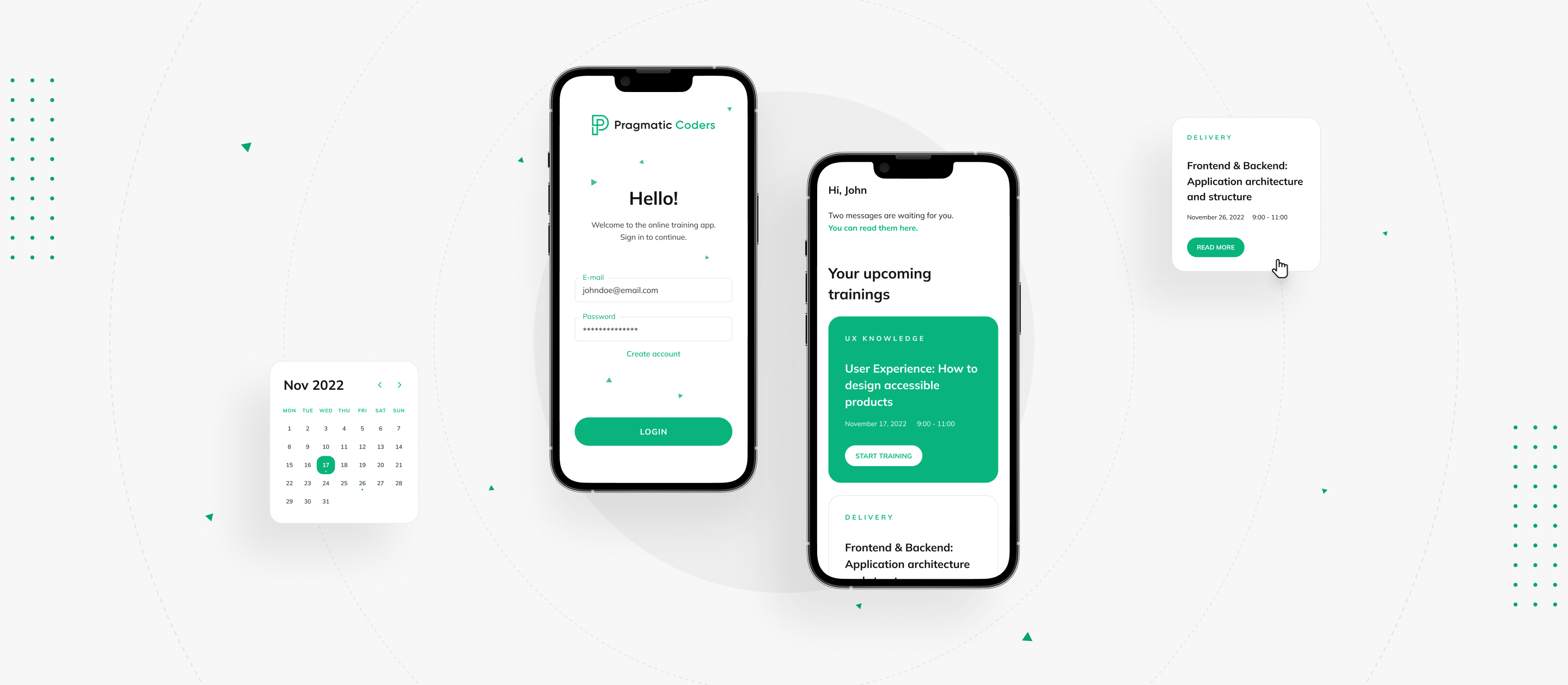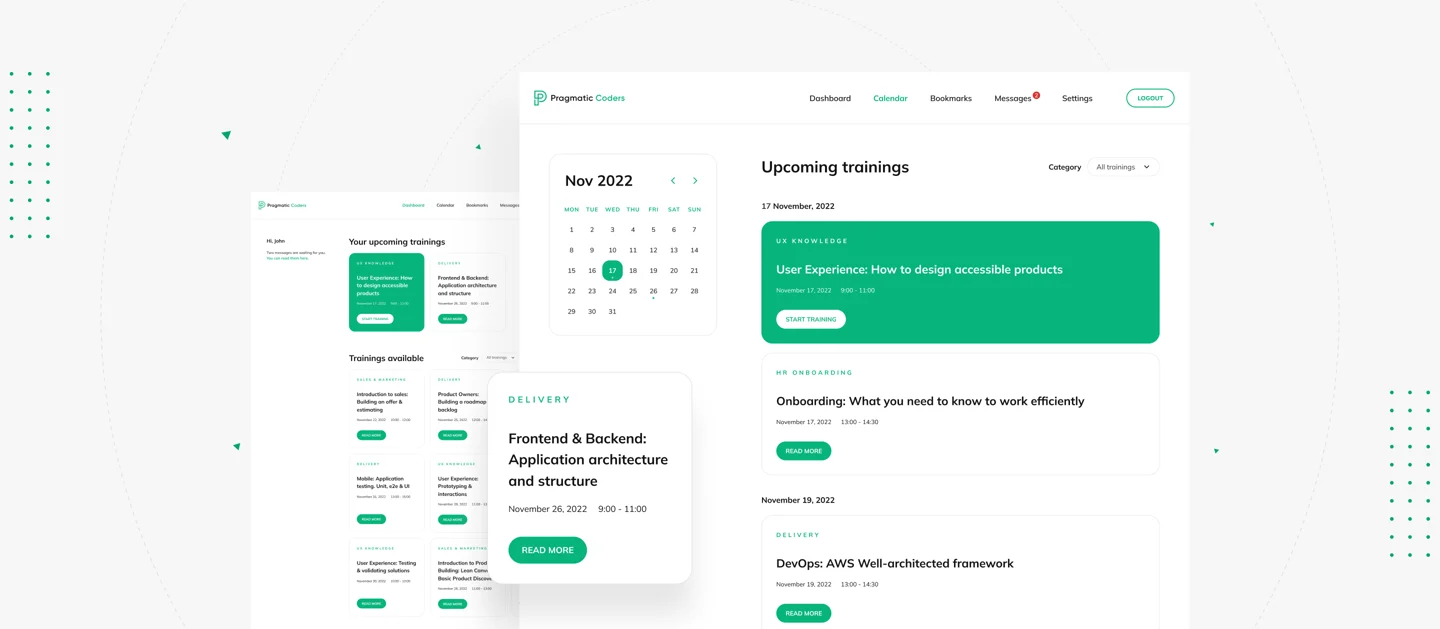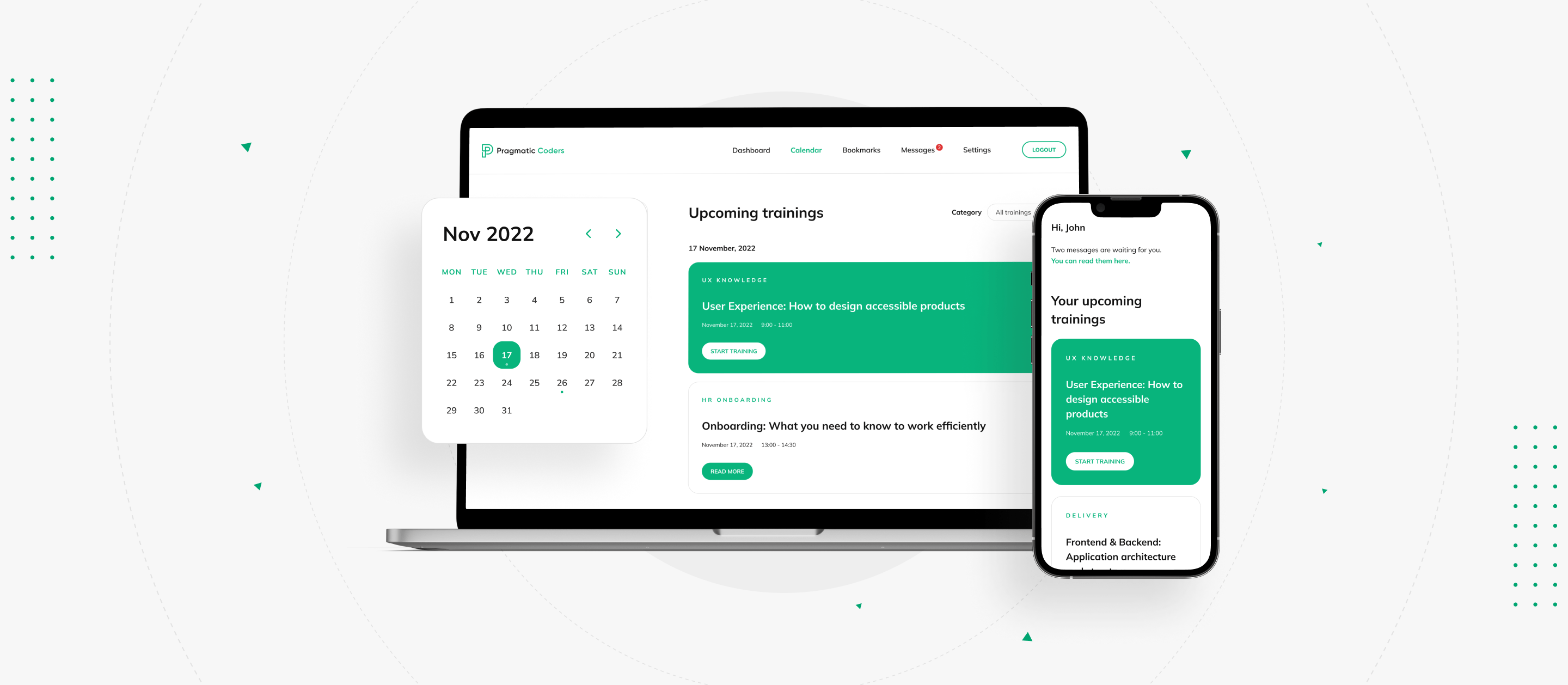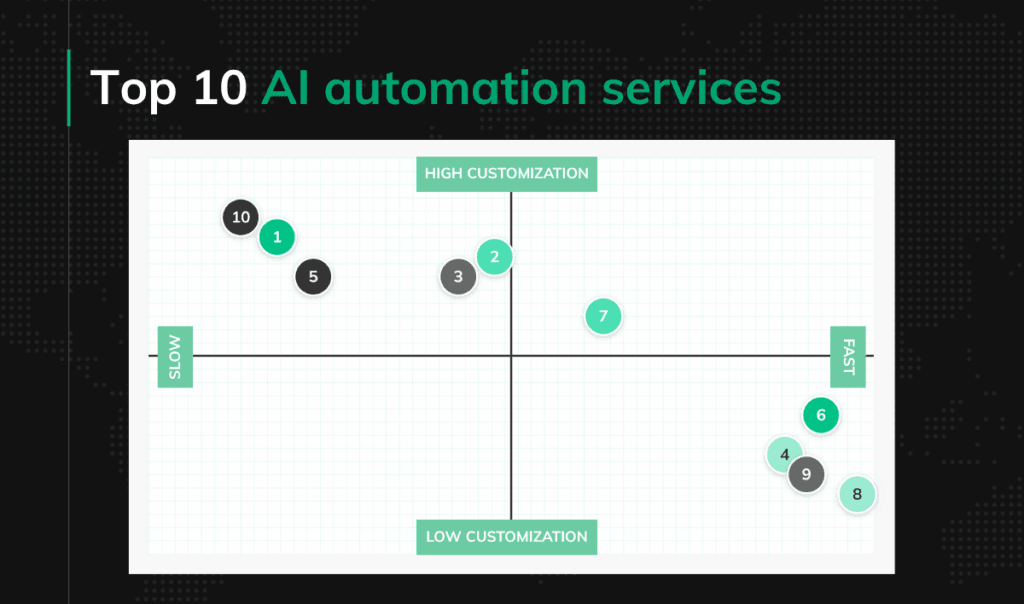
Creating a low-code training automation system to help HR departments in managing employee growth

In today’s market, employers must educate their workers. Investing in employee development helps increase staff qualifications and attract top talent to the organization.
However, as the number of employees and training programs increases, it becomes challenging for organizations to manage and track the training effectively. With multiple initiatives, keeping track of employee progress, assigning trainers, and organizing training dates can become overwhelming.
That’s what happened to our HR deparment.
How the concept was born
Our HR department, was facing a significant problem. As the number of workers in our company increased, it became more challenging to manage and monitor the entire internal training system.
- “We don’t have a tool to check training attendance lists.”
- “I have to collect training requests and manually send invitations to calendars.”
Those were just a few complaints raised during the HR department meetings.
They decided to create an online training management system that could make the process more effective. So we created an internal tool to help them achieve it.
Challenge. “I have to manually manage employee training.”
The department was assigned a team consisting of a Product Owner and a developer who started with defining their fundamental problems.
During a brainstorming session, they defined vital issues the HR department had to deal with on a daily basis.
- Attendance monitoring: ensuring each trainee signs the attendance list is laborious on its own, and things get more complicated when an employee accepts a training invitation but does not show up at the meeting.
- Re-scheduling training sessions: if an instructor can’t attend the training, they must find a new date for all participants.
- Changing a training date: especially problematic when an employee informs them they cannot attend a training just a few minutes before it starts.
- Manual training management: when a new employee joins the company, they need to manually assign him to all onboarding sessions, which is quite time-consuming.
- Lack of automation.
Apart from that, they had two requirements:
- The product needs to be developed ASAP.
- They have a very limited budget.
Having gathered all the information, the product team got down to work.
Prioritizing the requirements to reduce time & cost
To deliver the product as quickly and cheaply as possible, our team analyzed the current training processes and established critical requirements for the MVP.
Additional solutions, not essential for the MVP, were divided based on the MoSCoW approach and grouped into steps for future development in the form of a product roadmap.
Thanks to that, we were sure the product would be fully usable from the very beginning, but there would still be space to add more functionalities later.
Low-code joins the game
To cut the costs and delivery time even more, the decision was made to utilize low-code solutions. Our team conducted market research to get familiar with the low-code tools that fit the project. Among many tools, Adalo was selected.
Despite the platform being relatively advanced, the team faced a few challenges while applying low code to work. The biggest challenge was integrating the training management system with an external calendar’s API to manage all training events. The functionalities available in Adalo proved insufficient, but our developer determined they would manage to overcome the problem with a bit of coding.
Solution & benefits
In just three weeks, our team created a ready-to-use staff training system that automates the process and reduces the number of tasks for the HR department.
After getting access to the platform, an employee can manage all the training sessions independently and contact instructors directly without engaging the HR staff.
Solution. Sign up for training in just a few steps
The training platform created is straightforward to understand and use.
Here’s how it works:
- Log into the system with your company email.
- Choose your department.
- Choose the training you want to sign up for from the list of available training sessions. For training sessions that do not have a fixed date, the system will send an email notification when the instructor adds the date, allowing you to sign up for it.
- Choose the date of your training.
- Accept.
- In up to 3 minutes, you will receive training confirmation to your inbox. The event is added automatically to your calendar. You can resign anytime you want.
- After the training, the instructor marks your attendance in the system, so the HR department can be sure that you showed up for the meeting.
- Done!

Benefits. Time-saving, easy to use & generate reports
- No extra effort for the HR department. The long and time-consuming process of managing internal employee training is now history. Most of the work the HR department had to deal with previously is now moved over to the instructors and employees.
- No extra effort for trainees. All the work on an employee’s side ends when they click “Accept.” Since the meetings are automatically added to their Google Calendars, they don’t have to do it manually. And once they’ve attended a training session, they don’t even have to sign the attendance list.
- User-friendliness. Thanks to a simple and clear UI, the system is intuitive and easy to use.
- Feedback & reports at hand. The system aggregates feedback for each training and produces attendance reports. This, in turn, enables the HR department to spot problems easily and improve the quality of each course.
Summary
Thanks to the product our team created, the HR department can now spend less time managing the training sessions manually and focus on new challenges. With the super-quick delivery time, they could improve their work quality in less than one month.
Key observations
- No-code/low-code solutions make it easy to validate hypotheses quickly: Due to the quick turnaround in development, we could test it with real users in no time and were able to implement changes almost immediately. This can prove invaluable for startups looking to test their ideas and product solutions.
- Understanding of the no-code/low-code matters: Good understanding of the limitations of no-code let us speed up the delivery process by 50%. However, prior knowledge about the selected tool is required to use the tool’s potential fully. This is why hiring a software team with experience working in no-code & low-code is vital.
Contents

Let's talk
We’ve got answers on anything connected with software development.
Ask a question
You can ask us a question using the form below. We will respond as soon as possible.
Schedule a meeting
You can also schedule an online meeting with Wojciech, our Senior Business Consultant.

founders who contacted us wanted
to work with our team.
Check our automation-related articles

Newsletter
You are just one click away from receiving our 1-min business newsletter. Get insights on product management, product design, Agile, fintech, digital health, and AI.



